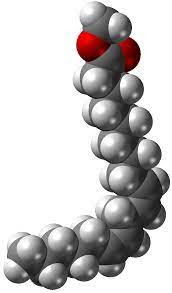 |
Fatty Acid Ester |
The fatty acid esters generated when the alcohol component is glycerol can be monoglycerides, diglycerides, or triglycerides.
Chemically, dietary fats are triglycerides.
Fatty acid esters are typically colorless, yet deteriorated samples can be yellow or even brown in appearance.
Powders, flakes, coarse powders, granular or waxy lumps, oils, or liquids are all examples of triglycerides.
They have almost no odor.
Transesterification of vegetable fats and oils produces fatty acid esters, which are used to make biodiesels.
The glycerol component is substituted with different alcohol in this method.
Fatty acid esters are made by dehydrating fatty acids and alkyl alcohol, and they have a conditioning impact on the skin, softening it and giving it a soothing sensation.
They're also used in cosmetics to dissolve active compounds with high polarity and UV absorbers.
Straight-chain fatty acid esters and lower alcohols are excellent at dissolving mildly soluble substances in oils when applied softly.
Hydrolysis of fats or oils (triglycerides) or fractional distillation of tall oil can both create fatty acids.
The hydrolysis can be done in the presence of a catalyst or with sulphuric acid at a low temperature.
As a by-product, glycerin is obtained.
Fractional distillation can further refine these fatty acids.
After that, the ester is produced over a solid catalyst.
The length of the acid chain is highly dependent on the origin of the oil and fat.
Tallow, palm kernel, tall oil, soya oil, and sunflower oil produce the majority of the fatty acids.
Food, cosmetics, soap and other personal care items, synthetic lubricants, and petrochemicals are all consumers of fatty acids and esters.
Comments
Post a Comment